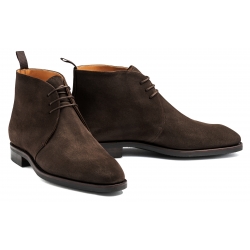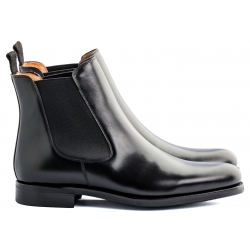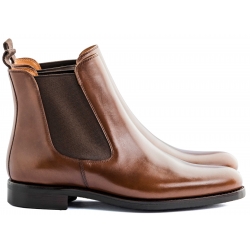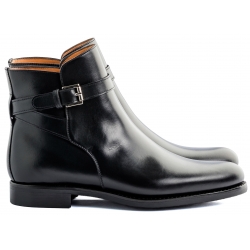Boots
Our welted boots offerings from Skolyx, Yanko, TLB Mallorca and Midas Bootmaker. You'll find chelsea boots, chukka boots, jumper boots, jodhpur boots and different types of workwear boots. Boots is a given choice in many regions of the world during the colder seasons, and we've focused on rubber soled versions, both with city rubber soles, studded rubber soles and other types.
We have a wide range of Goodyear welted boots where you’ll find both more elegant, formal models to heavier more rugged workwear boots. Chelsea boots with elastic sides are hugely popular, we have them in many leathers and colours. All our boots have sturdy rubber soles.
All shoes from Skolyx, Yanko and TLB Mallorca are made in Spain with a Goodyear welted construction to be easily resoleable and made in high quality full grain leather. Our offerings from Midas Bootmaker are hand welted in Indonesia.
Why should you choose welted boots?
Welted shoes have several characteristics that makes them particularly suitable for boots. A welted construction involves attaching the upper leather of the shoe with the insole and a leather strip (the welt), this is done with a welt seam. The outsole is then sewn into the welt with a seam running along the outside of the shoe, while a layer of cork is placed between the insole and the outsole. The cork moulds itself to the foot, and also provides really good insulation, so together with the thick leather insole and rubber outsole it does a good job of keeping the cold from the ground away.
Welted shoes also have a natural bumper with the protruding sole edge, while being a very water-resistant shoe construction, especially when combined with a so-called storm welt, which has an edge that goes up the side of the shoe.
Then of course you have the advantage that welted shoes can easily be resoled without having to take them apart completely, the welt seam holds everything together. When re-oling, you simply remove the sole stitch, pull off the outsole and attach a new one, which is then sewn on with a new sole stitch. A durable construction that can be easily repaired, perfect for sturdy footwear, like boots.
What are chelsea boots?
Chelsea boots are ankle boots with elastics on both sides of the shaft. The model was invented by J Sparkes-Hall, who was the bespoke cobbler for Queen Victoria in England in the 19th century, and he was also the one who developed the first balmoral boots for her husband Prince Albert. It was when Sparkes-Hall continued to work on the balmoral boot design and incorporated elastic textile pieces, that the new boot model was born, in 1837. "J. Sparkes-Hall's Patent Elastic Ankle Boots" was the official name.
Since then, the shoe model has evolved and taken on new areas, its current name being given during the swinging London era of the 1950-60s where celebrities such as the Rolling Stones, Jean Shrimpton and of course The Beatles wore the boot type, with the Chelsea district as its base. Today, Australia's RM Williams and Blundstone are the biggest manufacturers of chelsea boots, having made versions suitable for life on the Australian countryside that then spread across the world.
What do the name chukka boots come from?
Chukka boots are a lower boot style, with open lacing and usually 2-3 pairs of eyelets. The name comes from the sport of polo, where polo players often wore boots of this type between the games, thanks to its high comfort. In polo, a chukka is a seven-minute period of play, and a polo match consists of four to eight chukkas. The model type was also used as a military boot, including by the British military on operations in the African desert, from which the desert boots get their name, popularised by the brand Clark's with the soft crepe rubber sole.
What material is best for boots?
It's definitely recommended to choose boots made of some type of leather - which is natural, durable, breathable, can be made up nicely with shoe cream or pigmented suede spray, and can be waterproofed with shoe cream and wax or waterproofing spray. All leather is a bi-product from the meat industry. Synthetic leather, which are usually different varieties of petroleum-based plastic, cannot be refurbished and the damage is permanent, they breathe poorly or not at all, and have a much greater impact on the environment than leather. Much of the textile used for boots is also plastic-based.
When it comes to leather for boots, a good option is embossed leather, such as Scotch grain, which is extra tough and durable, but plain smooth full grain leather (which consists of the whole hide with the outer grain surface remaining, which is strong and provides good resilience, and where only the better hides can be used for this type of leather) is an excellent choice, for coarser boots it may be a good with thicker leather. A common misconception is that suede is a delicate material not suitable for boots, this is wrong, with today's good waterproofing sprays (use non-silicone ones though, which goes for all the ones we sell) it can withstand both dirt and moisture well, and high quality suede can take a beating.
There are 68 products.
































































